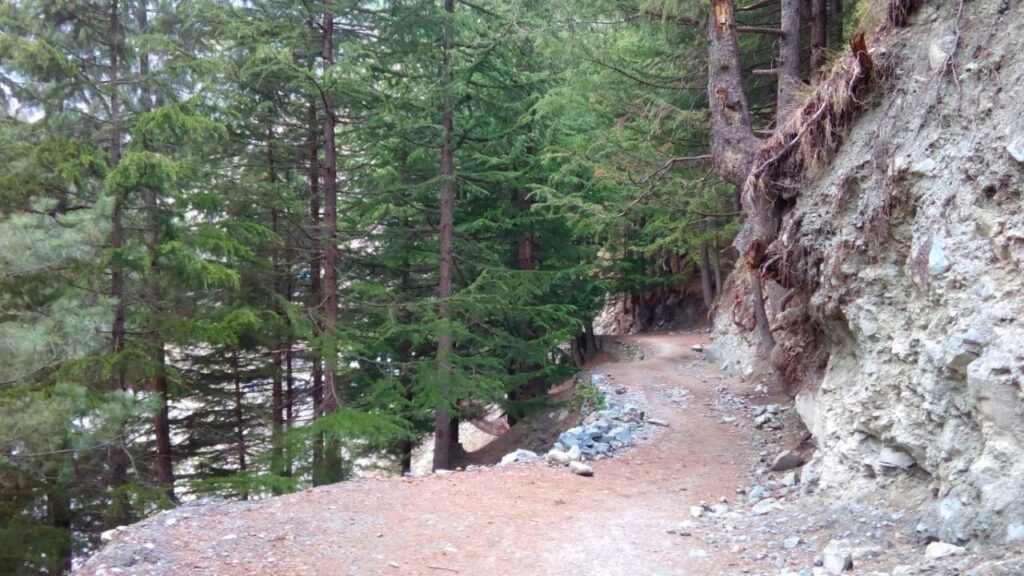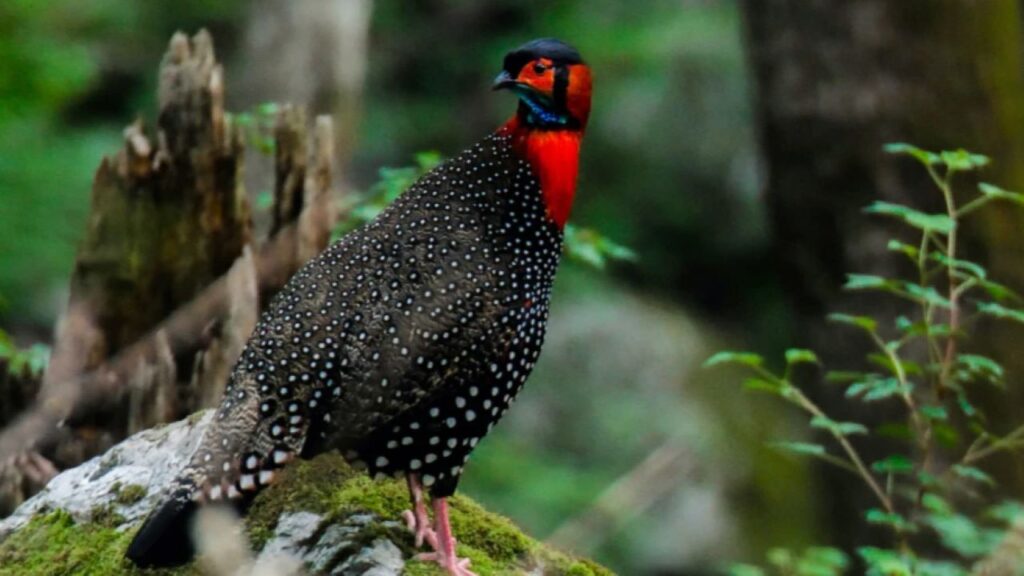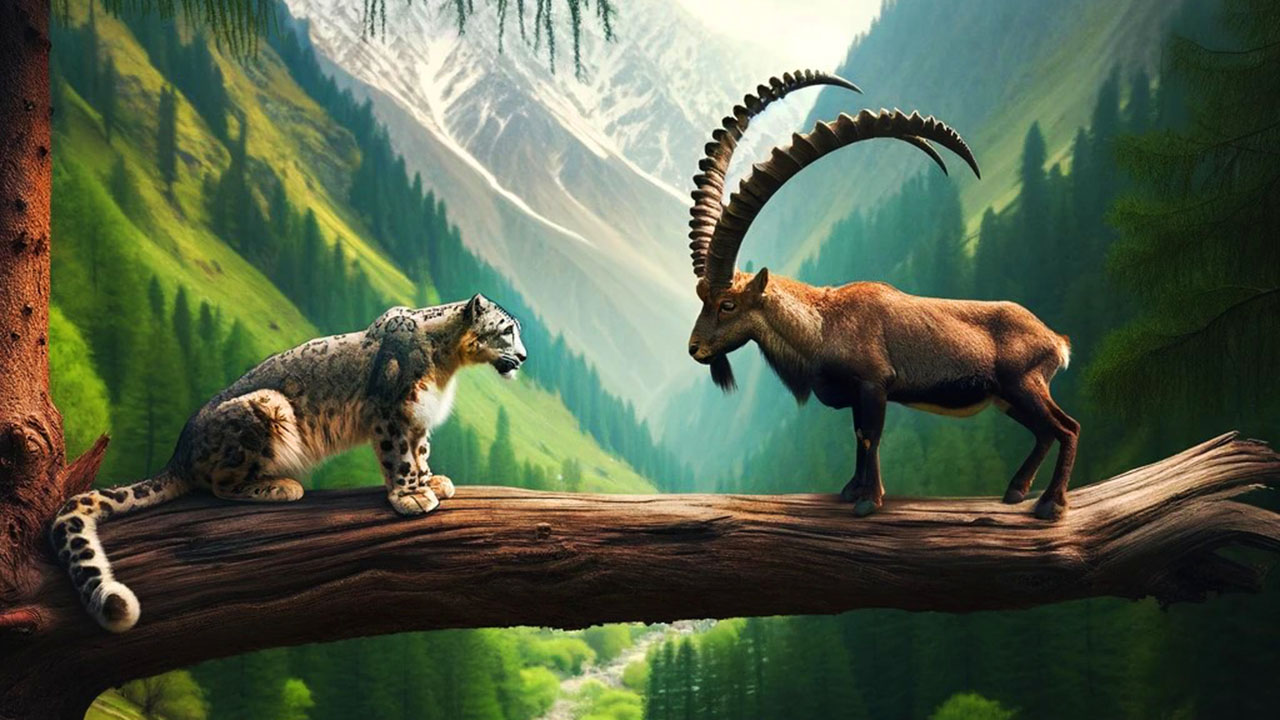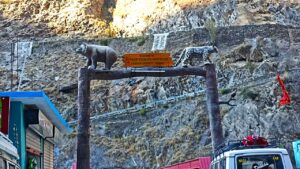Nestled in the heart of the Himalayas in Himachal Pradesh, Kugti Wildlife Sanctuary is one of India’s lesser-known gems. Covering an area of approximately 378 square kilometers, it is the second-largest sanctuary in the state of Himachal Pradesh and a critical habitat for a wide range of species. The sanctuary is particularly famous for its population of the Himalayan brown bear, a species that is both elusive and endangered. The diverse terrain of Kugti, ranging from high-altitude pastures to dense forests, also supports other wildlife such as the Himalayan tahr, ibex, and the rare and beautiful monal, Himachal Pradesh’s state bird. The sanctuary’s rivers and streams are teeming with life, providing vital water sources for the fauna and adding to the region’s biodiversity. For those seeking tranquility and an untouched natural environment, Kugti offers an unparalleled experience, showcasing the pristine beauty and rich biodiversity of the Himalayas.
With the addition of Kugti Wildlife Sanctuary, our exploration of India’s wildlife sanctuaries becomes even more enriching, highlighting the country’s commitment to preserving its natural heritage across diverse ecosystems. These sanctuaries not only play a pivotal role in wildlife conservation but also offer a sanctuary for the human spirit, reminding us of the deep connections between all living beings and the importance of living in harmony with nature.
A Sanctuary of Diverse Altitudes and Rich Biodiversity
Kugti Wildlife Sanctuary is uniquely positioned at altitudes ranging from 2,195 m to 5,040 m, offering varied ecological zones. It is bordered by the Tundah Sanctuary in the west, connected through a lush forest corridor. The sanctuary’s landscape is diverse, ranging from rugged terrains to serene meadows, creating an ideal habitat for a wide range of flora and fauna.
Flora: A Botanical Treasure Trove
The Kugti Wildlife Sanctuary’s vegetation is primarily characterized by moist deodar forests and western mixed coniferous forests, forming vast green expanses that harbor a remarkable diversity of plant life. This sanctuary stands out as a haven for botanists due to its abundance of medicinal plants and rare floral species, offering a captivating paradise for those interested in the study of flora.

Among the notable herbal treasures found within the sanctuary are Gentiana kuroo, commonly known as Karu, and Jurinea macrocephala, also referred to as Dhup. These plants are esteemed for their medicinal properties and have been traditionally used for various therapeutic purposes by indigenous communities living in the region.
Gentiana kuroo, or Karu, is valued for its bitter tonic properties and is utilized in traditional medicine to treat ailments related to digestion, liver disorders, and fever. Jurinea macrocephala, known as Dhup, possesses anti-inflammatory and analgesic properties, making it valuable for alleviating pain and inflammation.
The presence of such medicinal plants underscores the ecological significance of the Kugti Wildlife Sanctuary, not only as a sanctuary for wildlife but also as a reservoir of botanical wealth with immense potential for pharmaceutical research and conservation efforts. Protecting these invaluable botanical resources is essential for preserving the sanctuary’s ecological integrity and ensuring the continued availability of these medicinal treasures for future generations.
Fauna of Kugti Wildlife Sanctuary: A Glimpse into the Animal Kingdom
Kugti Wildlife Sanctuary is not only celebrated for its botanical wonders but also for its remarkable diversity of fauna. This sanctuary serves as a crucial habitat for a wide array of animal species, ranging from the majestic to the elusive, each playing a vital role in maintaining the ecological balance of this unique ecosystem.
The Majestic Himalayan Brown Bear
Among the most notable residents of Kugti is the Himalayan brown bear, a species that symbolizes the wilderness of the Himalayas. These bears are significant not only for their sheer size and strength but also as indicators of the health of the ecosystem. The sanctuary provides a safe haven for these bears, offering them vast expanses of habitat to roam, forage, and hibernate.

The Elusive Snow Leopard
Kugti’s rugged terrain and high-altitude landscapes are also home to one of the most elusive and mystical creatures on the planet – the snow leopard. These magnificent animals are superbly adapted to life in the cold, barren landscapes of the high Himalayas. Their presence in Kugti is a testament to the sanctuary’s pristine condition and the effectiveness of conservation efforts in the region.
Avian Diversity: Winged Wonders
Kugti Wildlife Sanctuary is a paradise for birdwatchers, hosting an impressive array of avian species. The dense forests and high-altitude meadows serve as breeding grounds for numerous birds, including the state bird of Himachal Pradesh, the Western Tragopan, known for its vibrant plumage and elusive nature. Other notable species include the Himalayan monal, with its iridescent feathers, and the snow pigeon, which thrives in the colder, higher altitudes of the sanctuary.

The Rich Mammalian Tapestry
The sanctuary’s mammalian population is as diverse as it is abundant, with species such as the Himalayan tahr, a large ungulate adapted to life on the steep rocky terrain, and the ibex, known for its impressive horns. The dense forests also provide refuge to leopards, offering a glimpse into the complex predator-prey dynamics that play out within the sanctuary’s boundaries.
Conservation Efforts and Human Impact
The conservation of Kugti Wildlife Sanctuary’s fauna is of paramount importance, not only for the preservation of biodiversity but also for maintaining ecological balance. The sanctuary’s management practices focus on protecting habitats, preventing poaching, and minimizing human-wildlife conflicts. Education and awareness programs are essential in fostering a harmonious relationship between local communities and the sanctuary’s wildlife, ensuring that conservation efforts are sustainable in the long term.
Kugti Wildlife Sanctuary’s fauna is a mirror to the rich biodiversity that thrives in the Himalayan region. It showcases the intricate web of life that exists in these remote, rugged landscapes and underscores the importance of conservation efforts to protect these natural wonders. As we delve deeper into understanding and appreciating the sanctuary’s animal inhabitants, we are reminded of our responsibility to preserve these natural habitats for future generations. The sanctuary stands as a beacon of hope for wildlife conservation, demonstrating that with dedicated efforts, the beauty and diversity of nature can be safeguarded.
The Enchanting Landscape and Spiritual Significance
Besides its natural beauty, the sanctuary is also known for the Manimahesh Temple, a spiritual site attracting thousands of pilgrims annually. The temple’s location within the sanctuary adds a unique spiritual dimension to this natural wonder.
Accessibility and Best Time to Visit
Kugti Sanctuary is accessible from major cities, with the nearest railhead at Pathankot. The best time to visit is between April to June and October to November, when the weather is most favorable for wildlife spotting and trekking.
Tundah Wildlife Sanctuary: A Connected Ecosystem
Adjacent to Kugti is the Tundah Wildlife Sanctuary, a significant ecological extension. It hosts a range of rare species, including musk deer, and forms a critical part of the region’s biodiversity.
Ecological wealth of the Himalayas
Kugti Wildlife Sanctuary, with its rich biodiversity, varied landscapes, and spiritual significance, offers a unique experience for visitors. It stands as a testament to the ecological wealth of the Himalayas, beckoning nature lovers to explore its untouched beauty.


